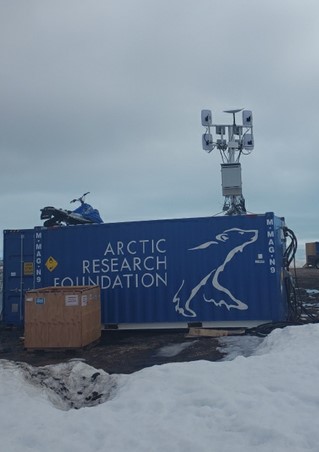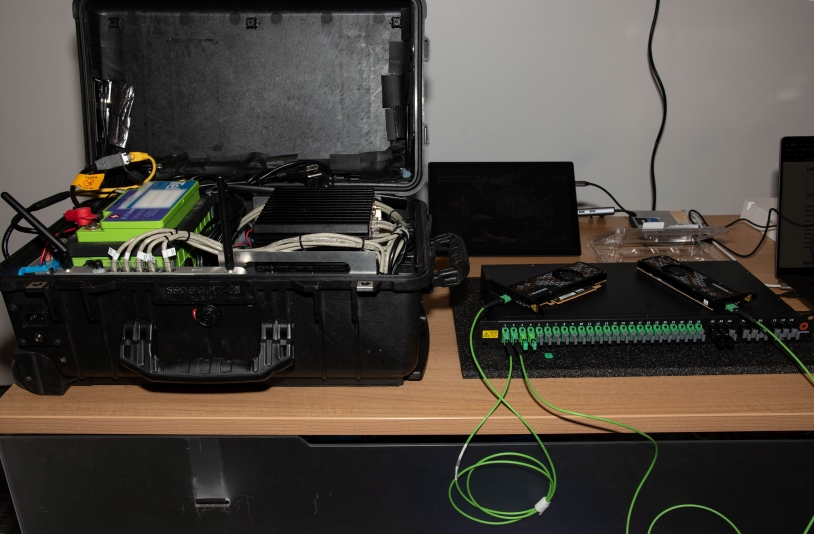Innovative solutions for remote Internet connectivity
Government of Canada (GC) employees in remote areas may have less Internet connectivity than those working in better connected urban environments. This prevents some users from doing their work as efficiently, based solely on their location. SSC put out a challenge to Canadian small- and medium‑sized enterprises (SMEs) to determine how they could work together to improve Internet connectivity for users in remote locations.
As part of an Innovative Solutions Canada (ISC) program challenge, SSC is currently exploring 2 solution options that were developed by iTel, a Canadian small business:
- a deployable weatherproof pole‑mounted unit
- a portable shock-resistant backpack unit
Both options contain:
- a security appliance
- a virtualization platform
- ethernet, Wi-Fi, cellular and satellite networking capability
SSC is contributing to the development of these devices with rigorous testing to ensure they are well-suited to production. This means that the technology may be available to the GC at large through standing offers.
By ensuring connectivity for all GC employees across Canada, including those in remote worksites, this project aligns with the roadmaps in SSC's Delivering Digital Solutions Together for Canada. It's another example of SSC and Canadian SMEs collaborating to support innovation.
What is the ISC program?
ISC is an Innovation, Science and Economic Development Canada program. It aims to stimulate the development and commercialization of innovative technologies in Canada. Participating federal departments present problems for Canadian small- and medium sized businesses to solve. Once they develop and issue a challenge, these businesses can submit ideas that address the problem. This challenge approach puts the GC first in line to purchase the product.
Submission solutions must:
- be new and not currently on the market
- support the department's mandate
A solution with potential real‑world applications
There are many possible applications for this technology. One application is taking place in the National Capital Region. iTel is installing a pole-mounted unit on the roof of a GC worksite. The unit will connect to the SSC Chief Technology Officer Branch's Innovation, Collaboration and Experimentation Lab (ICELab) and will enable the ICELab team to test the solution's capabilities. It will also act as an isolated, redundant Internet connection for the lab environment. This will maintain remote access and connectivity, even during a local Internet outage from the primary service providers.
Another example is the Naurvik project in Nunavut. The project explores how to grow food in the north using a shipping container converted into an environmentally controlled food production system or growing pod. It is a joint initiative between the community, the Arctic Research Foundation, Agriculture and Agri-Food Canada, the Canadian Space Agency and the National Research Council Canada. Due to its remote location, the Naurvik project's Internet connections were lacking. The scientists working on the project asked for reliable Internet connectivity to help them do their work. Installing the pole‑mounted prototype directly on top of the shipping container allows the scientists to transfer their data back and forth.
The portable backpack unit also shows a lot of promise for other real-world applications. The backpack is a completely mobile option with a built-in rechargeable battery. This allows users to take it wherever they need Internet connectivity. The system combines Internet connections from cell towers and other sources, such as StarLink, to provide a single, stable, performant connection. This is vital in areas that would otherwise have little to no connectivity.


With access to greater Internet connectivity, departments can now take on projects in these remote areas more effectively and reliably. This allows departments to do more research on the climates or experiences of Canadians living in those remote regions. GC partners have already expressed an interest in the backpacks to enable connectivity in rural and remote work locations, including assisting first responders. To help with the wildfire response in the Northwest Territories, the mobile Internet device was used to provide temporary Internet access in areas that otherwise had little to no connectivity.

iTel portable backpack-sized unit
To learn more about the ISC program, visit Innovative Solutions Canada.